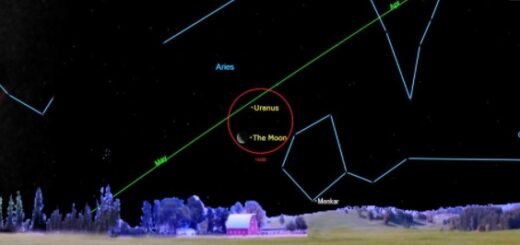The ‘God of Gods’—Shiva ‘The Destroyer’

In ancient Hinduism, Shiva is known as one of the gods of the Trimurti (‘three-forms’, the Hindu Trinity), where he represents the god that destroys the universe, along with Brahmá (the god who creates the universe) and Vishnu (the god that preserves the universe). Thus, he is referred to as Shiva the “destroyer of evil and the transformer”
(function(d, s, id) { if (d.getElementById(id)) return; var js = d.createElement(s); js.id = id; js.src = ‘//cdn4.wibbitz.com/static.js’; d.getElementsByTagName(‘body’)[0].appendChild(js); }(document, ‘script’, ‘wibbitz-static-embed’));
Within the so-called Shivaism, Shiva is considered the supreme god. A powerful deity unlike any other.
Ancient Hinduism explains that Shiva is described as an omniscient yogi who lives an ascetic life on Mount Kailash, and is represented with his wife Parvati, and two sons, Ganesha and Kartikeia.
Shiva has many benevolent ways as well as others to fear. He is often depicted as immersed in deep meditation. However, in his most fierce aspects, Shiva is often depicted slaying demons. He is also known as Adiyogi Shiva and is regarded as the patron god of yoga, meditation, and arts.
In Shaivism tradition, Shiva is the Supreme being who creates, protects and transforms the universe. (Source)
He is usually worshiped in the aniconic form of Lingam—an abstract representation of the Hindu deity.
However, among the most devout Hindus, this powerful God is considered a real God, that walked among humans in the distant past.
Often considered as a force for incredible good, he is also feared as a force for incredible destruction.
Interestingly, he is said to possess a trident which could annihilate anything in its path. Sounds familiar?
Shiva was also called Mahadeva, which means the Great God, God of Gods. And this God of Gods had a dual function in Hindu life. Destruction and Creation. There is no creation without destruction.
If we look back at ancient history, we will see that Shiva, like many other powerful gods, were thought to have originated from the stars. They were revered as visitors fro the stars. In other words, they were seen as extraterrestrials, since they did not originate on Earth.
To understand more about this powerful deity, we look deep into India, a country covering over 1.2 million square miles, considered the seventh-largest country on the planet, home to around 1.3 billion people, and therefore the second most populated on the surface of the planet.
India is also home to our planets oldest surviving religion which originated as far as 2000 BC.
The interesting part is that, for many people in India, their gods are not mythological in nature, but are real beings that have, at times, been present on the surface of the planet.
Its a powerful and rich history. Hinduism has many gods and goddesses which adorn their plentiful culture with stories, myths, legends and various different principles that they represent. Therefore, it is natural to have a population who firmly believes their gods were real. And despite the fact that they may have existed physically, they may not have always been visible, or present.
Vedas—a powerful history conveying an even greater message
Ancient Hindu Vedas and epics are their most powerful aspect. Through them, important messages were conveyed. In them we see that the Gods of Hinduism were not from Earth. Like the gods of many other cultures, their Gods came down from the sky.
The Vedas are historical records. Referred to as Itihasa–meaning history in Sanskrit–these ancient writings were not just ordinary religious stories.
And there is one important characteristic that marks the Hindu Gods stand out from other gods.
While other religions have their God depicted as an all-powerful being, the Vedic texts describe Hindu gods that often rely on the use of ‘tools’. These tools have been interpreted by ancient astronaut theorists as technologies. Technologies fro the Gods.
Having that said, an important question is raised: Is there a slight possibility—as some ancient astronaut theorists propose–that the Gods described in ancient Hindu texts were not only divine beings, but also extraterrestrial beings?
One of the most important Hindu stories is the Mahābhārata—one of the two major Sanskrit epics of ancient India, the other being the Rāmāyaṇa.
Many authors believe that the Hindu story of the Mahābhārata is filled with descriptions of what many people would today interpret as advanced technologies.
The Mahābhārata mentions flying vehicles—the Vimana. It also mentions what seem to be weapons, missiles, and even nuclear bombs.
Curiously, depictions of Shiva embody this idea of destruction and creation.
Shiva is often depicted holding a drum called a Damaru.
Damaru was a tool Shiva used to create the universe. Depictions of Shiva show him having a cobra posed to strike, around his neck. In one hand he is illustrated holding a trident-like weapon called the ‘Trishula’ and at the center of it we see something unusual: the third eye. Shiva is the only god that has a depicted with third eye. It is said that if this third eye were to open, it would produce a powerful light that would destroy everything.
Now that strange because usually, when we talk about the third eye we speak of enlightenment, meditation and peace. And here we have Shiva, one of the most prominent ancient Hindu Gods with a third eye that had the ability to destroy anything.
So, we have to ask, are the third eye of Shiva—the weapon—and the peaceful concept of the third eye the same?
If not, what was it? And what or who exactly was Shiva?
The Creation
Some of the earliest Vedic texts are believed to have been written around 4,000 years ago. However, the Hindus claim that these stories can be traced back hundreds and perhaps even thousands of years earlier, existing as part of an oral tradition that like many other things, had been passed down from one generation to generation.
Ancient astronaut theorists tell us that Shiva most likely arrived at Earth at a time before modern humans walked the planet, but most importantly, before the event known, in Biblical tradition as the Great Flood.
Now the great flood is a very important clue. If you take a close look at history, you’ll find that nearly every culture around the globe has some sort of ancient writings or oral traditions, where they speak and detail a massive destruction that occurred on Earth: The Great Flood.
This catastrophic event is said to have wiped out much of the life on Earth in one single day.
Now, ancient astronaut theorists point towards Shiva the god of destruction. And in the Hindu tradition, you have to have destruction in order to have creation.
Even more interesting is the fact that Tibetan lamas tell that, after the great Flood, when the whole Earth was destroyed by extreme rising waters when the waters eventually receded, mankind was created by the seed that was guarded by Lord Shiva.
All of these descriptions are interesting.
Robert Oppenheimer, the father of the atomic bomb, observed the first atomic explosion at the Trinity test site. There, he cited a line from the Bhagavad Gita—a 700 verse Hindu scripture in Sanskrit that is part of the Hindu epic Mahabharata.
“I have become death, destroyer of worlds.” That’s the title that belongs to Shiva. Shiva the Destroyer.
And looking from a different point of view, we ask whether it is possible Shiva was not just a deity, but an extraterrestrial visitor that was responsible for not only the creation of mankind but the destruction of an earlier race of beings that inhabited Earth?
And if so, did Shiva destroy, in order to create? To make way for modern humans?



 Creators of mankind
Creators of mankind Description of “Tall white aliens”
Description of “Tall white aliens” Where they came from?
Where they came from? About hostile civilizations
About hostile civilizations The war for the Earth
The war for the Earth “Tall white aliens” about eternal life
“Tall white aliens” about eternal life Video: “Nordic aliens”
Video: “Nordic aliens” Aliens
Aliens Alien encounters
Alien encounters The aliens base
The aliens base UFO
UFO Technology UFO
Technology UFO Underground civilization
Underground civilization Ancient alien artifacts
Ancient alien artifacts Military and UFO
Military and UFO Mysteries and hypotheses
Mysteries and hypotheses Scientific facts
Scientific facts


















